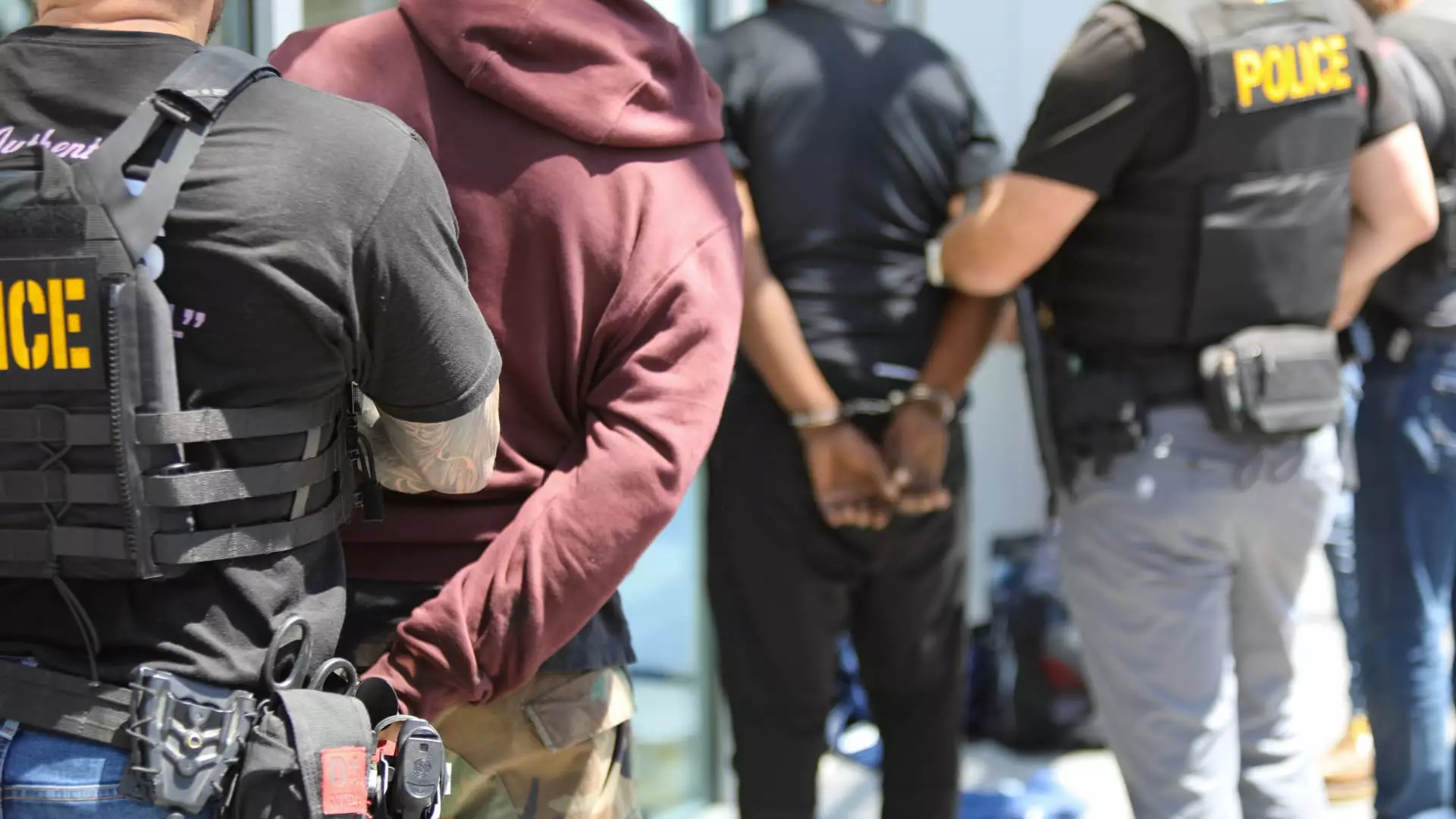Across the United States, organized retail crime has evolved into a beast of alarming proportions and catastrophic consequences for businesses and consumers alike. This isn’t merely a case of everyday shoplifters pilfering items for personal use; we are witnessing sophisticated operations characterized by groups of thieves targeting large retailers to turn stolen goods into cash. The recent nationwide crackdown, conducted in collaboration with over 100 jurisdictions and spearheaded by Cook County’s crime task force, marks a decisive initiative to combat this plague. But while the law enforcement blitz resulted in over 500 arrests in just one week, it raises a question: will this concerted effort be enough?
The statistics haunting the retail landscape provide a grim narrative. In just the span of a few years, reports indicate a staggering 93% uptick in shoplifting incidents from 2019 to 2023, with losses connected to this crime reaching dizzying heights of 90%. It’s crucial to understand that these figures aren’t just numbers on a page; they represent significant losses that ultimately trickle down to consumers through increased prices and diminished service quality. As crime rates soar, the average shopper finds themselves increasingly unease while traversing the aisles of major retailers.
Lack of Legal Deterrence
Amid the escalating numbers, voices have emerged criticizing the legal framework that governs retail theft. Some argue that the paradigm allows the persistent violation of laws without sufficient deterrent. For instance, Cook County State’s Attorney Eileen O’Neill Burke has expressed concerns over existing felony thresholds, which previously required a far more severe set of circumstances to charge suspects with felonies. Under the previous regulations, felony charges were reserved for shoplifters stealing goods valued at over $1,000 or for repeat offenders with ten or more convictions. This leniency has contributed to the problem, enabling criminals to flout the law with minimal consequence.
O’Neill Burke’s effort to recalibrate charging standards signals more than just a change in legal approach; it illustrates a necessary cultural shift. By enabling prosecutors to more aggressively pursue felony charges for thefts exceeding $300, authorities might not only curb the crime rate but also foster a climate of accountability among would-be thieves. If individuals understand that serious consequences accompany their actions, it may serve as a legitimate deterrent. The truth is, criminals thrive on the perception of being untouchable.
The Role of Collaboration
While legislative change is indispensable, it cannot function in isolation. The mounting retail theft problem demands a well-coordinated collaborative approach among law enforcement agencies, legal entities, and private retailers. The recent blitz serves as a prime example of how collaboration can yield meaningful results. Retailers such as Ulta Beauty and Walgreens have openly acknowledged their partnerships with law enforcement, recognizing that pooling resources and intelligence is perhaps the most effective way to dismantle intricate networks of organized crime.
By aligning their operational goals with those of law enforcement, retailers can not only enhance their security measures but also contribute insight and data that drive more targeted operations. It’s not a panacea, but systemic collaboration could very well lay the foundation needed to combat, if not completely eradicate, this pervasive issue.
The Future of Retail Security
The success of this operation should encourage policymakers to explore innovative legal frameworks that address the nuances of modern organized crime. The need for more robust legal measures becomes even clearer when one considers that the retail landscape is as dynamic as the criminals exploiting it. Adapting laws to reflect the evolving nature of retail crime is not just prudent; it is necessary.
Furthermore, as businesses invest in better security technologies and data-sharing initiatives, consumers will benefit from safer shopping environments. Ultimately, the concerted efforts of law enforcement and the retail sector must aim for an achievable goal: preventing the cycle of theft while promoting a sense of safety that shoppers deserve. The battle against retail crime is only just beginning, but with the right strategies and partnerships, there is hope for a more secure retail future.

